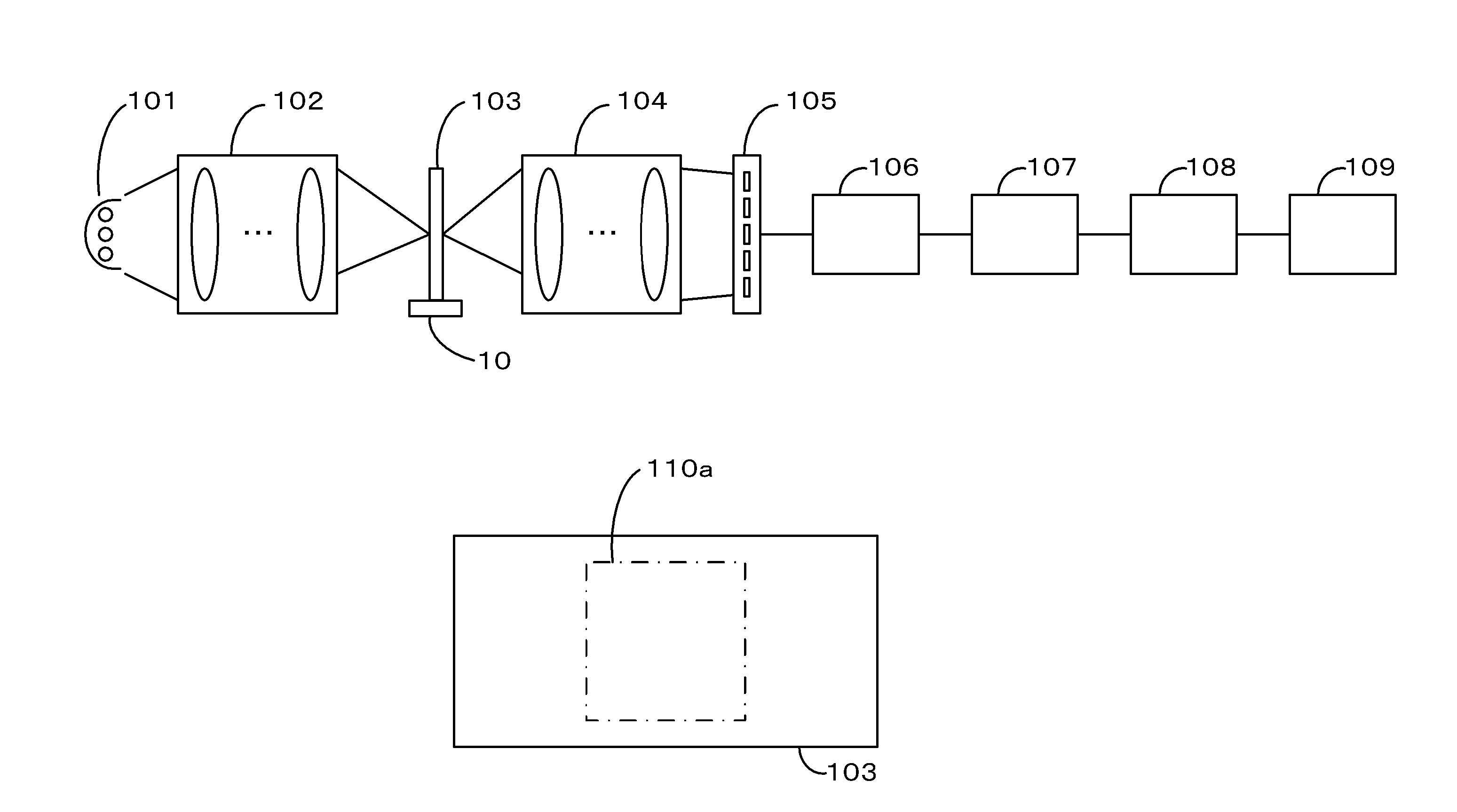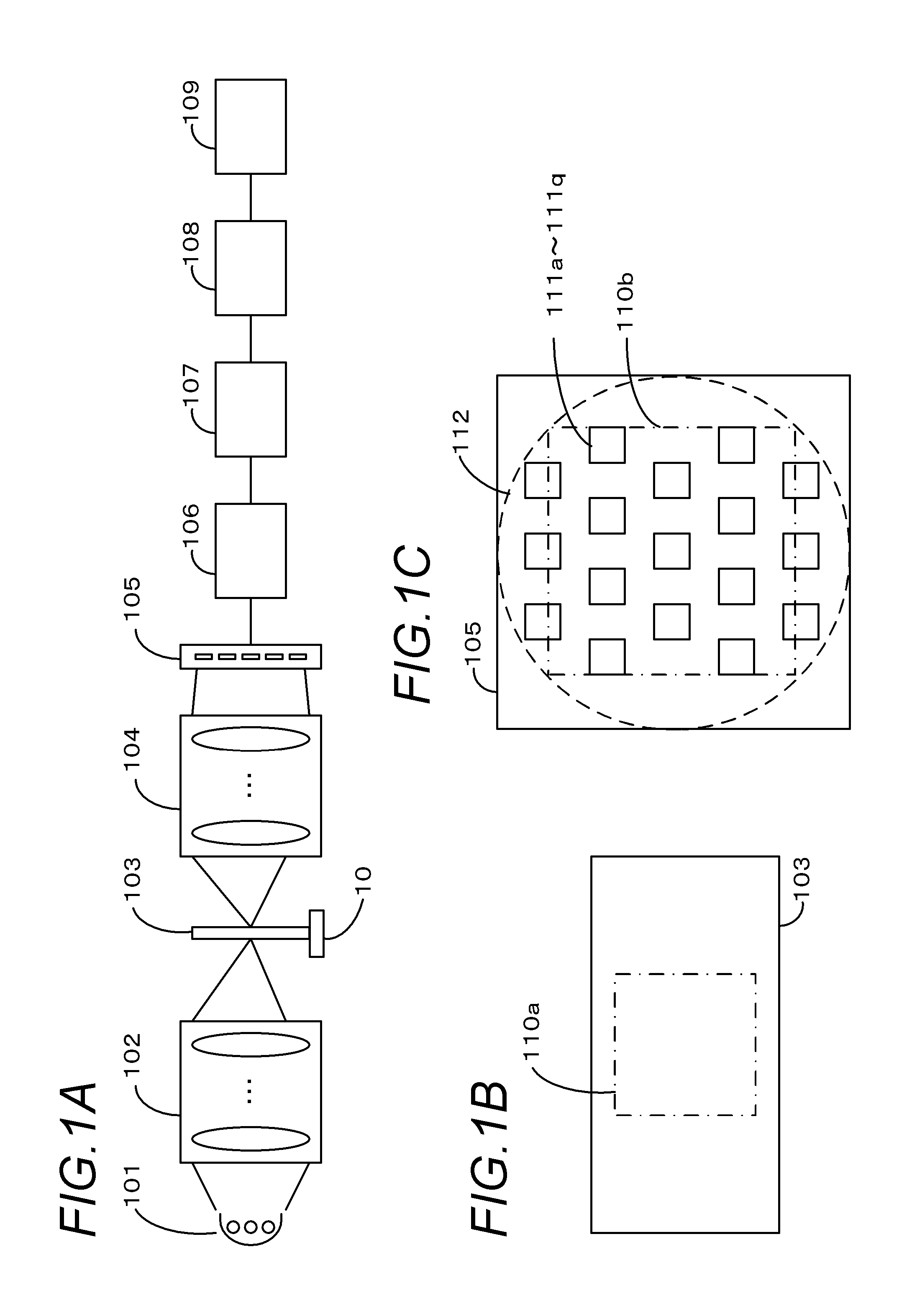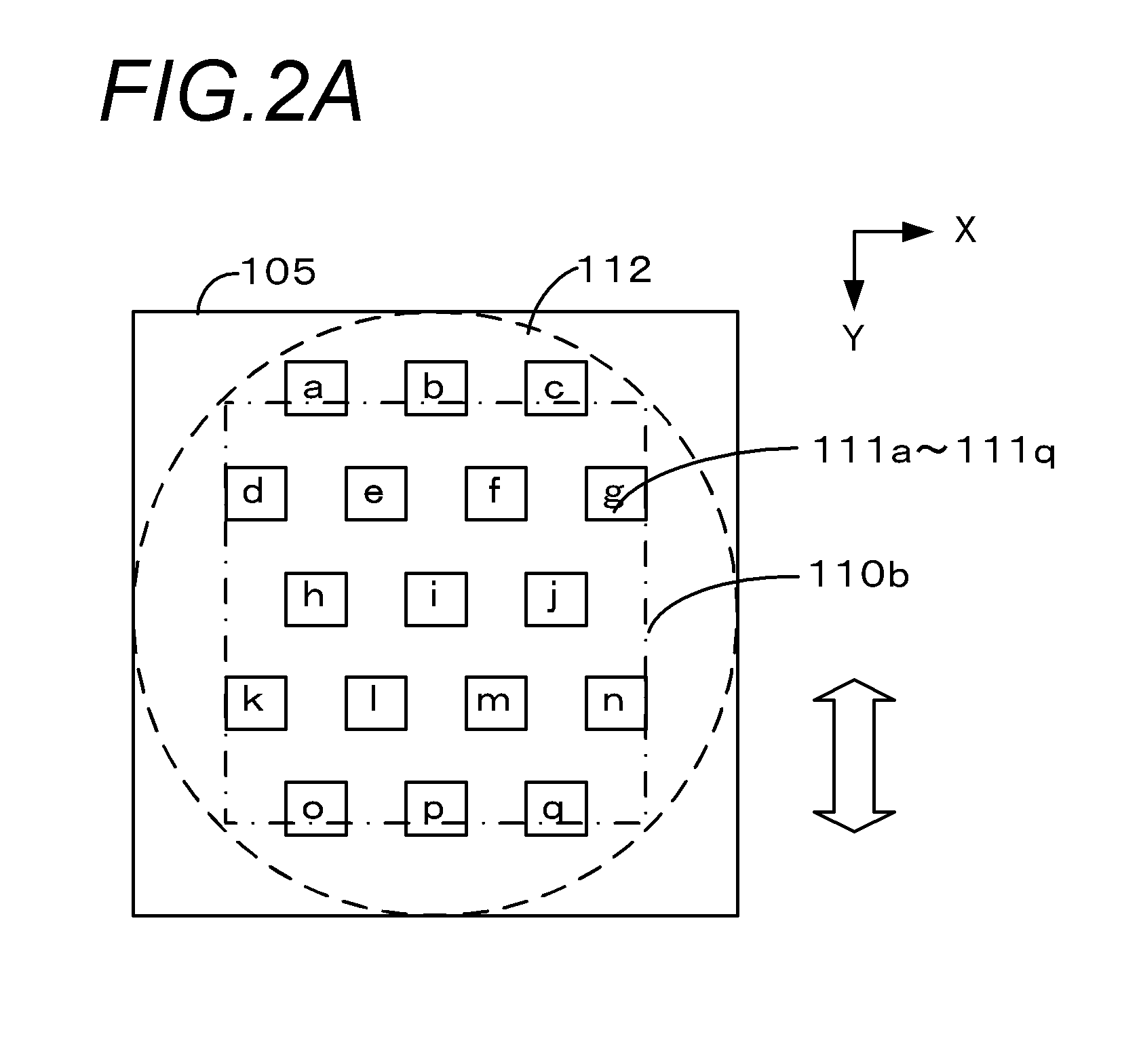Imaging apparatus
- Summary
- Abstract
- Description
- Claims
- Application Information
AI Technical Summary
Benefits of technology
Problems solved by technology
Method used
Image
Examples
first embodiment
Configuration of Imaging Apparatus
[0033]FIG. 1A to FIG. 1C are schematic diagrams depicting a general configuration related to imaging of an imaging apparatus. This imaging apparatus is an apparatus for acquiring an optical microscopic image of a sample on a slide 103 as a high resolution digital image.
[0034]As FIG. 1A illustrates, the imaging apparatus is comprised of a light source 101, an illumination optical system 102, a moving mechanism 10, an imaging optical system 104, an imaging unit 105, a development / correction unit 106, a merging unit 107, a compression unit 108 and a transmission unit 109. The light source 101 is a means of generating illumination light for imaging, and a light source having emission wavelengths of three colors, RGB, such as an LED (Light Emitting Diode) and an LD (Laser Diode) can be suitably used. The light source 101 and the imaging unit 105 operate synchronously. The light source 101 sequentially emits the lights of RGB, and the imaging unit 105 exp...
second embodiment
[0158]Now the second embodiment of the present invention will be described. In the first embodiment mentioned above, the correction area is determined according to the largest relative coordinate shift amount in the overlapped areas. In other words, the width of the correction area is constant. Whereas in the second embodiment, the correction area is adaptively determined within the overlapped area according to the relative coordinate shift amount of the center line of the overlapped area. Thereby the width of the correction area changes according to the relative coordinate shift amount. Thus the only difference between the present embodiment and the first embodiment mentioned above is the approach to determine the correction area. Therefore in the description of the present embodiment, a detailed description on portions the same as the first embodiment is omitted. For example, the configuration and processing sequence of imaging and image merging of the imaging apparatus shown in F...
third embodiment
[0166]Now the third embodiment of the present invention will be described. In the first embodiment and the second embodiment mentioned above, the method for determining the correction area based on the representative points on the center line of the overlapped area was described. Whereas in the third embodiment, the position of the correction area is adaptively determined based on the correction of two images in the overlapped area. The difference from the first embodiment and the second embodiment is that the calculation of the relative coordinate shift amount does not depend on the center line of the overlapped area. Thus the only difference of the present embodiment from the first and second embodiments is the method for determining the correction area. Therefore in the description of the present embodiment, a detailed description of the portions the same as the first embodiment is omitted. For example, the configuration and the processing sequence of imaging and image merging of...
PUM
 Login to View More
Login to View More Abstract
Description
Claims
Application Information
 Login to View More
Login to View More - R&D
- Intellectual Property
- Life Sciences
- Materials
- Tech Scout
- Unparalleled Data Quality
- Higher Quality Content
- 60% Fewer Hallucinations
Browse by: Latest US Patents, China's latest patents, Technical Efficacy Thesaurus, Application Domain, Technology Topic, Popular Technical Reports.
© 2025 PatSnap. All rights reserved.Legal|Privacy policy|Modern Slavery Act Transparency Statement|Sitemap|About US| Contact US: help@patsnap.com



